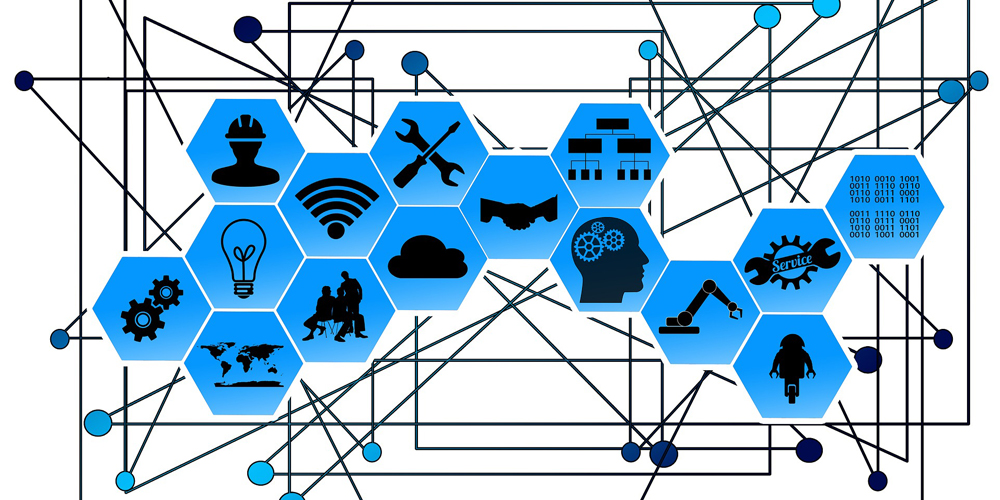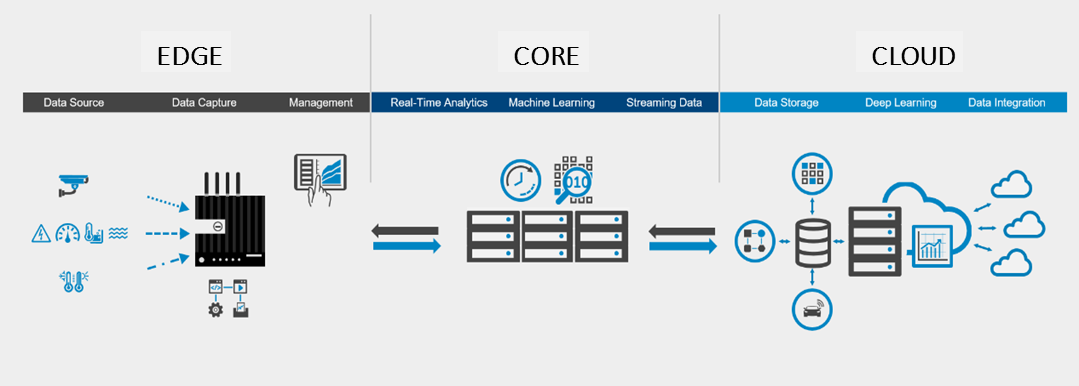
Think of the Internet of Things (IoT) as a set of ‘things’ that should be stitched together to benefit from data collection to data mining. What is widely understood is that IoT is about data collection, dataflow and data analysis; but it is not common knowledge that the IoT substratum is an end-to-end secured infrastructure solution with sensors at one end and enterprise IT gear at the other end, with a variety of intelligent data aggregators in between.
Software based workloads like machine learning and deep learning that analyze billowing amounts of data, are elementary to the IoT solutions stack, and the efficiency of these workload is built upon the technical capabilities of the enterprise IT infrastructure that shapes the datacenter. Never before in human history has computing power and data storage been so readily accessible – and economically viable.
Dell Technologies as an IT infrastructure provider is poised to create the end-to-end IOT solution stack for customers in this digital economy. We work with system integrators, partners and domain experts like accelerator processors who bring the expertise to design and implement efficient IOT solutions. Dell EMC’s tour de force is the 14th generation of PowerEdge Servers, whose unique capabilities in NVDIMM memory subsystem, NVMe storage devices, remote management through iDRAC and GPU based computing, amplify the impact of the IoT solution.

As you read on, you’ll understand the diagram which depicts the components in an IoT continuum. We have invested heavily in our engineering efforts to enhance NVDIMM capability of PowerEdge servers which boosts application performance, data security, system crash recovery time and to enhance SSD endurance and reliability. If a separate thread on a dedicated core can be assigned for reading and writing intermediate results from applications, the performance can be further improved- and our new server portfolio enables that.
The new generation of Dell EMC servers are highly optimized for NVMe storage that can create overall cost parity by regularly flushing the contents from NVDIMM. IoT workloads also utilize typical database system and transaction logging that can be configured on the NVDIMM to boost performance. The compute architecture of PowerEdge is designed in such a way that the in-memory database systems can utilize these NVDIMM capabilities for performance gains.
We understand that scalability, change management and serviceability are key parameters in IoT deployment and these requirements are efficiently satisfied by the remote management features in our new server portfolio. PowerEdge servers automate mainstream operations in iDRAC is what makes it an integral constituent while designing any IoT solution. The security aspects of the new server portfolio makes it the core ingredient in the assemblage of a secure and connected infrastructure for IoT. These servers are undoubtedly the bedrock of IT infrastructure for IoT solution.
All things considered, Dell Technologies with its highly capable solutions at edge, core and cloud, along with global partners, is uniquely positioned to provide the right technology to design the most secured and most efficient IoT solutions. After all, IoT solutions have to result in operational efficiency, better customer experience, mitigate risks and identify newer business models – thereby unleashing the true potential of our customer’ business.